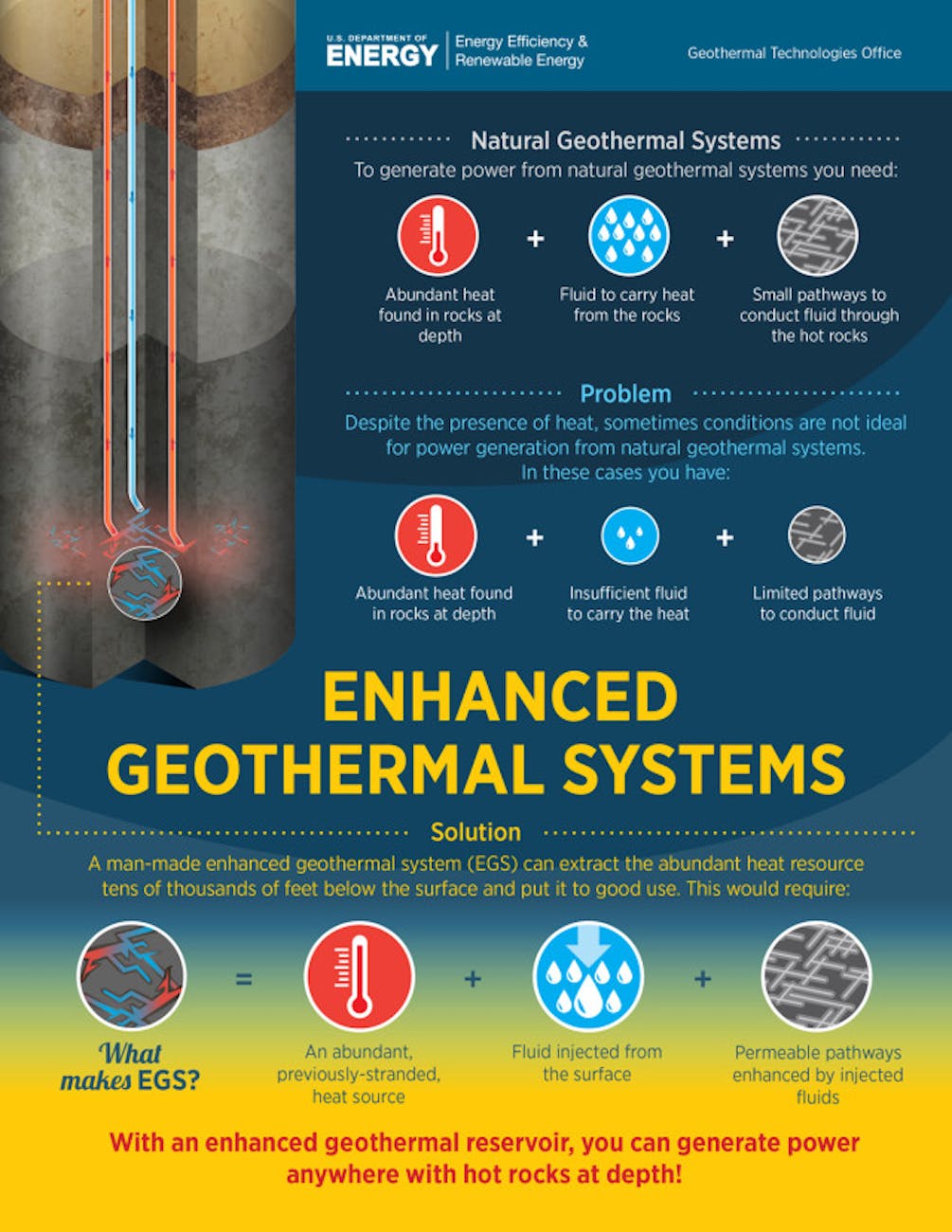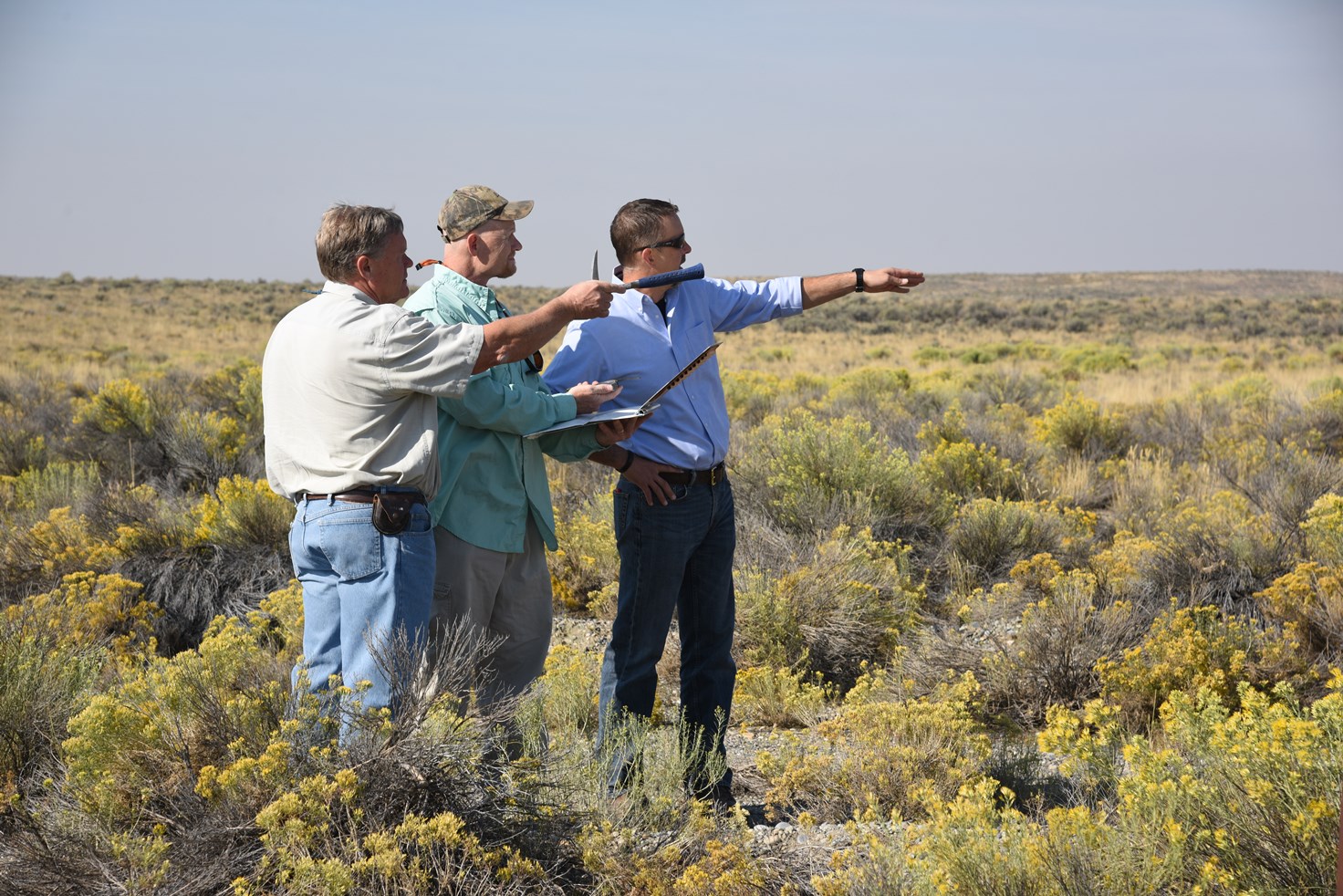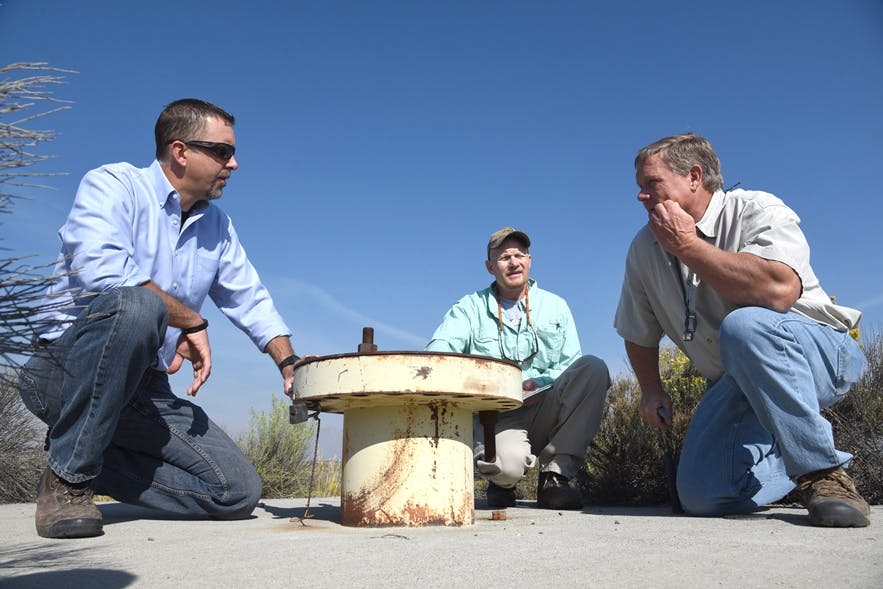Rob Podgorney is not making any secret of his ambition. A sign on his door at the Center for Advanced Energy Studies reads, “How are you going to change the world?”
As the geothermal energy chief of Idaho National Laboratory’s Energy Systems and Technologies Division, Podgorney believes there is a massive amount of energy to be tapped roughly two miles beneath Idaho’s Snake River Plain. He leads the Snake River Geothermal Consortium, one of five groups pursuing the development of Enhanced Geothermal Systems for the U.S. Department of Energy’s Office of Energy Efficiency and Renewable Energy.
Put simply, what the consortium seeks to do is pump water into the rock about 8,000 to 12,000 feet deep, fracture the rock and capture heat, then bring heated, pressurized water back to the surface to generate energy. Phase 1 studies for the Frontier Observatory for Research in Geothermal Energy (FORGE) are underway, thanks to $400,000 that DOE awarded to INL in April. Podgorney believes the consortium has a good chance of making the cut and being one of three participants selected for Phase 2, which involves up to $29 million in funding.
Besides INL, other members of the consortium include DOE’s National Renewable Energy Laboratory and Lawrence Livermore National Laboratory. The Center for Advanced Energy Studies includes Idaho State University, Boise State University, the University of Idaho and the University of Wyoming. The University of Oklahoma and the University of Utah have joined the consortium, and an advisory panel representing regulatory agencies, industry and environmental groups is on board. Private-sector partners include Mink Geohydro, U.S. Geothermal, Baker Hughes, Campbell Scientific and Alaska’s Chena Power.
Harnessing heat
For all the talk about energy shortages, the fact is the Earth is giant ball of energy that has been producing heat ever since the solar system was formed billions of years ago. The temperature at the core — 6,000 degrees Celsius — is roughly the same as the surface of the sun. All that heat radiates outward through the Earth’s mantle and crust.
Earthquakes and volcanoes remind us all the time of the energy under the Earth’s surface, but efforts to harness it have been limited.
Less than 1 percent of the electricity in the United States comes from geothermal sources. Conventional geothermal power plants have been built at sites where heat, water and permeable rock are close to the surface, but few places have been found that are large enough to generate significant amounts of energy.
With Enhanced Geothermal, there is no need for pre-existing subsurface water or permeable rock. Instead, fluid (mostly water) is injected deep below the surface into hot rock that has been fractured. Over the past 10 to 20 years, the oil and gas industry has amassed a wealth of knowledge about fracturing subsurface rock.

Using that knowledge and collecting more from a location at the western edge of DOE’s Idaho Site, Podgorney believes EGS could eventually generate nearly carbon-free energy on a scale that could benefit the regional economy and demonstrate revolutionary principles to the rest of the world.
Unlike intermittent renewable sources such as wind and solar, geothermal plants provide an available source of baseload power that is available 24 hours a day, seven days a week. Like wind and solar, geothermal energy is also virtually emission-free.
Why the Snake River Plain?
In real estate, there are few things more important than location, and the Snake River Plain offers something truly unique. Not only is it one of the most geologically distinctive places on Earth, it is perfectly suited to produce EGS heat, Podgorney and other members of the consortium believe.
The plain was created by the migration of the North American continent over the Yellowstone Hot Spot. To get a picture of this, imagine holding a piece of paper over a candle and moving it across the flame. While Yellowstone National Park is atop the hot spot now, the land that moved across it — the Snake River Plain — still has high heat flow and subsurface temperatures at accessible depths.

Creating and operating an Enhanced Geothermal System requires water, which is needed to crack the underground rock and create a heat reservoir. Sitting right underneath the Snake River Plain is an aquifer roughly the size of Lake Erie.
Development of DOE’s Idaho Site over the past 65 years means there are good roads that make the area accessible year-round and existing wells to provide substantial data for an EGS field laboratory. In fact, INL researchers have amassed huge amounts of information about the Snake River Plain’s geology and hydrogeology. The United States Geological Survey, one of the partners in the consortium, maintains a field office at the DOE site and works closely with INL staff.
Addressing concerns
Podgorney said the two biggest concerns he hears about FORGE are the potential for harm to the aquifer and danger from earthquakes.
INL will protect the aquifer, however, by selecting a drill site far from areas impacted from historical operations, and the water used to make energy will not contain contaminants. The team will drill far below the aquifer to hot deep rock that is “tight,” meaning it doesn’t transmit water easily. The small amount of water there resembles water already in the aquifer.
The consortium plans to extract heat at this level through carefully sealed wells that form a closed system. So no water moves between the deeper zones and the aquifer or the other way around — and no wastewater is created.
“It is important to note that the process is not the same as that used in oil and gas ‘fracking,’ where the production and disposal of contaminated water is an issue,” Podgorney said.
Most of the seismic activity associated with oil and gas fracking isn’t from drilling, but from the wastewater being injected back into the earth. The waste fluids injected in fractured rock can act like a lubricant on existing faults and trigger ground movement.
The Idaho FORGE project will not be injecting any wastes, and plans to avoid faults. The water injected will be pumped out in an adjacent well, forming a closed-loop flow system. Thanks to INL’s seismic monitoring network, there are reams of existing data for the proposed drill site. This data predict any seismic activity from the project would be too small to feel, let alone damage faraway facilities.
Then there is the geologic stability of the Snake River Plain itself. Although formed by volcanic activity and bordered by seismically active territory, the Plain is remarkably quiet when it comes to earthquakes. In October 1983, a magnitude-7 quake hit Mount Borah, roughly 30 miles from the ground on which INL proposes to build the FORGE EGS field laboratory. While the mountain towns of Mackay and Challis suffered extensively from the shock, buildings and facilities at the seismically buffered DOE Site showed only slight damage, if any.
If INL is selected to advance to Phase 2, an analysis of environmental impacts will be conducted in compliance with the National Environmental Policy Act and other evaluations will be performed to ensure this technology is compatible with the Idaho site’s nuclear facilities.







